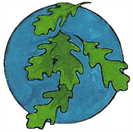


Sources:
Trees of North America- A guide to field identification-a Golden Field Guide from St. Martin's Press © 2002 By C. Frank Brockman p.32
The Encyclopedia of North American Trees by Sam Benvie. Firefly Books Ltd.,2000 Buffalo, NY © 2000 Sam Benvie p.174
Diseases of Trees and Shrubs, 2nd edition, by Wayne A. Sinclair and Howard H. Lyon, © 2005 Cornell University, Cornell University Press, p. 26, 290
Herbal, The Essential Guide to Herbs for Living, by Deni Brown, © 2001 Pavilion Books, an imprint of Anova Books Company LTD. 10 Southcombe Steet, London W13 0RA. 2001 Edition published by Metro Books. Text © 2001 Deni Brown p. 208, 211
USDA, NRCS. 2011. The PLANTS Database (<http://plants.usda.gov/>, 22 August 2011). National Plant Data Team, Greensboro, NC 27401-4901
Corey, Jennifer H.. 1992. Pinus palustris. In: Fire Effects Information System, [Online]. U.S. Department of Agriculture, Forest Service, Rocky Mountain Research Station, Fire Sciences Laboratory (Producer). Available: http://www.fs.fed.us/database/feis/ [2011, August 22].
Owsley, Mike, 2011. Plant fact sheet for longleaf pine. (Pinus palustris Mill.). USDA-Natural Resources Conservation Service, Jimmy Carter PMC Americus, Georgia 31719.
Trees of North America- A guide to field identification-a Golden Field Guide from St. Martin's Press © 2002 By C. Frank Brockman p.32
The Encyclopedia of North American Trees by Sam Benvie. Firefly Books Ltd.,2000 Buffalo, NY © 2000 Sam Benvie p.174
Diseases of Trees and Shrubs, 2nd edition, by Wayne A. Sinclair and Howard H. Lyon, © 2005 Cornell University, Cornell University Press, p. 26, 290
Herbal, The Essential Guide to Herbs for Living, by Deni Brown, © 2001 Pavilion Books, an imprint of Anova Books Company LTD. 10 Southcombe Steet, London W13 0RA. 2001 Edition published by Metro Books. Text © 2001 Deni Brown p. 208, 211
USDA, NRCS. 2011. The PLANTS Database (<http://plants.usda.gov/>, 22 August 2011). National Plant Data Team, Greensboro, NC 27401-4901
Corey, Jennifer H.. 1992. Pinus palustris. In: Fire Effects Information System, [Online]. U.S. Department of Agriculture, Forest Service, Rocky Mountain Research Station, Fire Sciences Laboratory (Producer). Available: http://www.fs.fed.us/database/feis/ [2011, August 22].
Owsley, Mike, 2011. Plant fact sheet for longleaf pine. (Pinus palustris Mill.). USDA-Natural Resources Conservation Service, Jimmy Carter PMC Americus, Georgia 31719.
Map courtesy USDA NRCS PLANTS Database
Longleaf Pine,
Pinus palustris Mill.
Common names: Longstraw pine, Southern Yellow pine, Longleaf Yellow pine, Swamp pine, Georgia Pine
State List: AL, AR, FL, GA, LA, MS, NC, SC, TX, VA
Visit the Image Gallery for more photos
View all North American native pine tree species.
Botanical
Pinus palustris Mill. is a native conifer found in the southeastern United States. Living between 400 and 500 years, Longleaf pine grows up to 120 feet tall and 2.5 feet in diameter. A rapid grower, it is common for this species to be 40 feet tall in only 20 years. Like most pines, the first few years are spent in a grass stage where it develops a deep and extensive root system. This is a fire adaptation which gives the tree an ability to sprout from the root collar when top killed. Longleaf pine derives it's name from the 6 to 18 inch long drooping needles. They are bright green, flexible and grow in tufts at branch ends. The number of individual needles bundled together varies between 3 in most of it's range, and 5 in the Gulf area; although sometimes bundles of 2 are found as well.
State List: AL, AR, FL, GA, LA, MS, NC, SC, TX, VA
Visit the Image Gallery for more photos
View all North American native pine tree species.
Botanical
Pinus palustris Mill. is a native conifer found in the southeastern United States. Living between 400 and 500 years, Longleaf pine grows up to 120 feet tall and 2.5 feet in diameter. A rapid grower, it is common for this species to be 40 feet tall in only 20 years. Like most pines, the first few years are spent in a grass stage where it develops a deep and extensive root system. This is a fire adaptation which gives the tree an ability to sprout from the root collar when top killed. Longleaf pine derives it's name from the 6 to 18 inch long drooping needles. They are bright green, flexible and grow in tufts at branch ends. The number of individual needles bundled together varies between 3 in most of it's range, and 5 in the Gulf area; although sometimes bundles of 2 are found as well.



The large colorful pine cones are pendulant, meaning they hang down from the branches. Cones are 6 to 10 inches long, have no prickles on the scales and take 2 years to mature. As pictured to the left, they are warm, rich, brown with tinges of rusty orange. Enclosed inside are brown, winged seeds, which are the largest of any southern pine. A stand out characteristic of this native tree are it's distinct and large terminal buds. These new growth shoots, or candles, are creamy yellow to white, sometimes 3 inches or more in length, and have a soft, scale-like appearance. They are not very conspicuous as they are surrounded by a thick tuft of needles, and even then, they are really only visible on the lower branches of younger trees at eye level up to 15 feet or so. Trunks are tall, straight and largely branch free. Wide spreading, thick, sometimes twisted branches support an irregular, open crown. The bark is grayish brown to reddish brown and broken into irregular, somewhat flaky plates. It is the largest of the native southern pines.
Habitat
Preferred sites of Longleaf pine have a soil pH between 6.0-7.0. It grows best on well drained, infertile soils of medium to coarse texture below 600 feet in elevation. As with most other fast growing, tall trees, P. Palustris is shade intolerant and commonly occupies forest edges, clearings and areas with a canopy opening. In most stands, they tend to grow with some distance between individual trees, which allows for light needs and branch space. The climate needs to be warm, wet, with high humidity and 250 frost free days. Annual rainfall requirements are between 40 and 60 inches. Despite these environmental needs, Longleaf pine is frost hardy and can tolerate temperatures down to -3°F. It is a water loving native tree and draws moderately on available ground moisture, but it is also moderately drought tolerant.
Diseases and Pests
Of the many negative agents that attack Longleaf
pine, only one is a serious threat. Brown spot
Habitat
Preferred sites of Longleaf pine have a soil pH between 6.0-7.0. It grows best on well drained, infertile soils of medium to coarse texture below 600 feet in elevation. As with most other fast growing, tall trees, P. Palustris is shade intolerant and commonly occupies forest edges, clearings and areas with a canopy opening. In most stands, they tend to grow with some distance between individual trees, which allows for light needs and branch space. The climate needs to be warm, wet, with high humidity and 250 frost free days. Annual rainfall requirements are between 40 and 60 inches. Despite these environmental needs, Longleaf pine is frost hardy and can tolerate temperatures down to -3°F. It is a water loving native tree and draws moderately on available ground moisture, but it is also moderately drought tolerant.
Diseases and Pests
Of the many negative agents that attack Longleaf
pine, only one is a serious threat. Brown spot


Synonym: Pinus australis Michx. f.
needle blight, Mycosphaerella dearnessii (synonyms: Scirrhia acicola, Eruptio acicola), causes foliage death and depressed growth. This pathogen infects P. Palustris during it's grass stage most often and may kill the tree if infection is severe for 3 years. Other than grass stage seedlings, damage is mostly seen on small trees and the lower branches of larger trees. Brown spots start near needle tips and grow to encircle the entire tip. Eventually, the foliage dies and falls off, and any new foliage growth is reinfected. Other issues in association with Longleaf pine are pitch canker- Fusarium moniliforme var. subglutinans, annosus root rot- Heterobasidion annosum, cone rust-Cronartium strobilinum, and needle rusts- Chrysomyxa apocoynaceum and C. Inconspicuum. Insect pests are black turpentine beetles, various bark beetles, and seed eating bugs.
Uses
Longleaf pine is a leading commericial timber in the southern United States. Uses include lumber, pulpwood, and veneer. Resin is also collected and used in the production of turpentine. Turpentine has been used in times past in treatments of a variety of ailments. Respiratory complaints like coughing, bronchitis, common colds, and influenza were eased by steam baths and inhalers. Skin problems, wounds and sores were also treated with poultices and salves. In the late 1800's, it was even used to treat tuberculosis. At one time, Pinus palustris was one of the most widely used trees
Uses
Longleaf pine is a leading commericial timber in the southern United States. Uses include lumber, pulpwood, and veneer. Resin is also collected and used in the production of turpentine. Turpentine has been used in times past in treatments of a variety of ailments. Respiratory complaints like coughing, bronchitis, common colds, and influenza were eased by steam baths and inhalers. Skin problems, wounds and sores were also treated with poultices and salves. In the late 1800's, it was even used to treat tuberculosis. At one time, Pinus palustris was one of the most widely used trees
in naval stores all over the world. It's pitch, resin and tar were valuable in the industry and helped to establish this native tree as a commercial commodity. Needles are commonly used as pine straw mulch, which is gaining popularity for the benefits over traditional bark mulch. Lesser known are uses in the culinary and beauty world. Oils are often used to scent perfumes and resin, also known as rosin or colophany, is used in skin treatments. The food industry collects oils from the needles, which is used as flavorings in soft drinks and bakery items.
Propagation
Longleaf pine can be propagated by bare root, containers, and seeds. Because of the extensive root systems that grow in the first few years of development, container plants can become 'containerized' with insufficient root structures. This proves problematic as the tree gets older, becoming prone to windthrow, as it doesn't have a proper taproot. Because of this issue, grafting is the most common vegetative propagation method used. Consequently, this makes Longleaf pine harder to find in nurseries for use in home landscaping projects.
Restoration
While in some areas of it's native range Longleaf pine is well populated, communities in Texas are listed by the Texas National Heritage Program as threaten. At one time, the total range area over the southeast was
Propagation
Longleaf pine can be propagated by bare root, containers, and seeds. Because of the extensive root systems that grow in the first few years of development, container plants can become 'containerized' with insufficient root structures. This proves problematic as the tree gets older, becoming prone to windthrow, as it doesn't have a proper taproot. Because of this issue, grafting is the most common vegetative propagation method used. Consequently, this makes Longleaf pine harder to find in nurseries for use in home landscaping projects.
Restoration
While in some areas of it's native range Longleaf pine is well populated, communities in Texas are listed by the Texas National Heritage Program as threaten. At one time, the total range area over the southeast was
estimated to cover 59 to 87 million acres. Sadly, that number has been dramatically reduced to approximately 5 to 10 million today. Quite a difference! Even more unfortunate, most of the remaining populations are in poor health. In recent years, restoration projects have gained momentum and captured the public attention. The aim is to not just restore the trees, but also the Longleaf pine ecosystems. It is an ambitious effort that involves planting native understory species like grasses, shrubs, legumes, and wildflowers as well as the trees themselves. Longleaf pine communities support and house a large and diverse population of wildlife and numerous endangered plant and animal species. The preservation of these ecosystems is imperative to sustaining a healthy habitat.
Longleaf pine needles ©2011 Treesforme original image. Please see our usage requirements.
Mature stand of Pinus palustris
©2011 TreesForMe original image. Please see our usage requirements.
©2011 TreesForMe original image. Please see our usage requirements.
Longleaf pine cone ©2011 TreesForMe original image. Please see our usage requirements.



Friday, May 30, 2025

™
|
|
|
|
|
| A-Z scientific | ||
| A-Z by Common Name | ||
| Families | ||
| Browse by State | ||
| Rare or Endangered Species | ||
| Trees_with_Special_Uses | ||
| Tallest and Biggest |
| Aceraceae Maple Family | ||
| Anacardiaceae Sumac Family | ||
| Annonaceae Custard Apple Family | ||
| Aquifoliaceae Holly Family | ||
| Arecaceae, Palm Family | ||
| Betulaceae Birch family | ||
| Bignoniaceae Trumpet Creeper Family | ||
| Burseraceae Frankincense Family | ||
| Caprifoliaceae Honeysuckle Family | ||
| Chrysobalanaceae Coco-plum Family | ||
| Cornaceae Dogwood Family | ||
| Cupressaceae Cypress Family | ||
| Cyrillaceae Cyrilla Family | ||
| Ebenaceae Ebony Family | ||
| Ericaceae Heath Family | ||
| Fabaceae Pea Family | ||
| Fagaceae Beech Family | ||
| Hamamelidaceae Witch Hazel Ffamily | ||
| Hippocastanaceae Horse Chestnut Family | ||
| Juglandaceae Walnut Family | ||
| Lauraceae Laurel Family | ||
| Leitneriaceae Corkwood Family | ||
| Magnoliaceae Magnolia Family | ||
| Meliaceae Mahogany Family | ||
| Moraceae Mulberry Family | ||
| Myricaceae Bayberry Family | ||
| Myrsinaceae Myrsine Family | ||
| Myrtaceae Myrtle Family | ||
| Nyctaginaceae Four Oclock Family | ||
| Olacaceae Olax Family | ||
| Oleaceae Olive Family | ||
| Pinaceae Pine Family | ||
| Platanaceae Plane Tree Family | ||
| Polygonaceae Buckwheat Family | ||
| Rhamnaceae Buckthorn Family | ||
| Rosaceae Rose Family | ||
| Rubiaceae Madder Family | ||
| Rutaceae Rue Family | ||
| Salicaceae Willow Family | ||
| Sapindaceae Soapberry Family | ||
| Sapotaceae Sapodilla Family | ||
| Simaroubaceae Quassia Family | ||
| Styracaceae Storax Family | ||
| Symplocaceae Sweetleaf Family | ||
| Theaceae Tea Family | ||
| Tiliaceae Lindon Family | ||
| Ulmaceae Elm Family | ||
| Taxaceae Yew Family | ||
| Yucca Family |
| Maple A-Z |
| sumac_family_a-z |
| custard_apple_family_a-z |
| holly_trees_a-z |
| palm_family_a-z |
| birch_family_a-z |
| trumpet_creeper_family_a-z |
| honeysuckle_family_a-z |
| dogwood_family_a-z |
| cypress_family_a-z |
| heath_family_a-z |
| pea_family_a-z |
| beech_family_a-z |
| walnut_family_a-z |
| magnolia_family_a-z |
| olive_family_a-z |
| rose_family_a-z |
| willow_family_a-z |
| franklinia |
| elm_family_a-z |
| Federal List | ||
| State Lists | ||
| Invasive_species |
| Restoration of the American Chestnut | ||
| Restoration of the American Elm | ||
| Sustainable Forestry |
| Contact Us | ||
| Our Contributors | ||
| Photo of the Month | ||
| Usage Requirements | ||
| FAQ | ||
| Report a Broken Link |
| photo_submission |
| Photo Store |

Custom Search
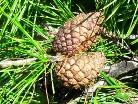
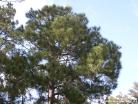
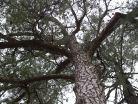
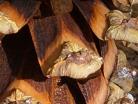
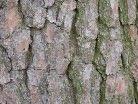
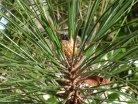
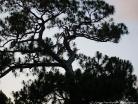
Want to add your tree to our picture gallery? Click here for details!
Tree lists:
•A-Z by scientific
name
•A-Z by common
name
•By Family
For state A-Z list click state name below.
•A-Z by scientific
name
•A-Z by common
name
•By Family
For state A-Z list click state name below.
-Color denotes a tree that is rare or endangered


